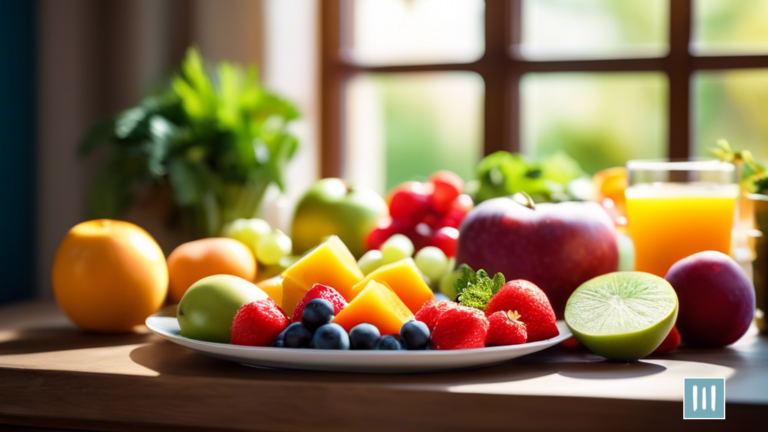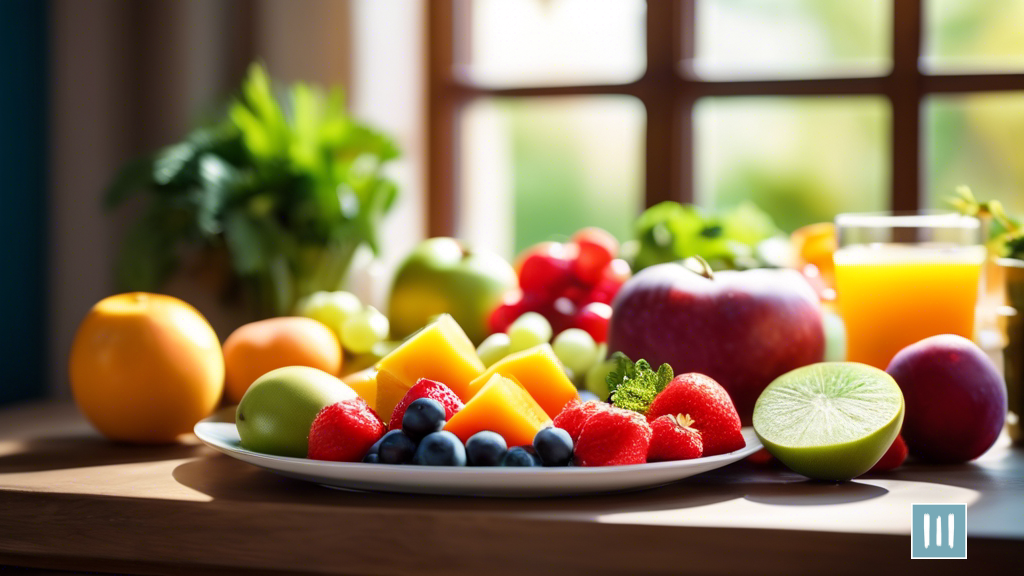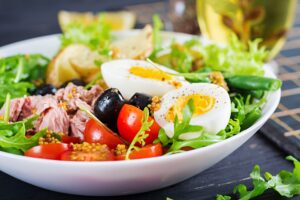Did you know that studies show that around 45 million Americans go on a diet each year? With so many people looking to improve their health and lose weight, it’s important to find an effective and balanced approach to meal planning. When it comes to weight loss, it’s not just about cutting calories or following the latest fad diet – it’s about nourishing your body with nutrient-dense foods and creating sustainable habits that support your goals.
In this article, we will explore the key components of effective and balanced weight loss meal plans. From choosing nutrient-dense foods that provide sustained energy to incorporating fiber-rich foods for digestive health, we will discuss how to create a meal plan that supports your weight loss journey. By focusing on portion control, balanced macros, hydration, and meal prepping, you can set yourself up for success and achieve your weight loss goals in a healthy and sustainable way.
Let’s dive in and discover how you can create meal plans that nourish your body, support your weight loss goals, and help you feel your best.
Key Takeaways
- Choosing nutrient-dense foods for sustained energy
- Incorporating lean protein sources and fruits/vegetables for overall health
- Including healthy fats for long-lasting energy and satiety
- Portion control and balanced macros for a well-rounded diet
Nutrient-Dense Foods for Sustained Energy
To maintain your energy levels throughout the day, focus on including plenty of nutrient-dense foods in your weight loss meal plans. Opt for whole grains like quinoa and brown rice, which provide a steady release of energy.
Incorporate lean protein sources such as chicken, fish, tofu, or beans to keep you feeling full and satisfied. Don’t forget about the power of fruits and vegetables – they’re packed with essential vitamins and minerals that will support your overall health and well-being. By choosing nutrient-dense foods, you’ll not only fuel your body for weight loss but also for optimal performance in your daily activities.
In addition to whole grains, lean proteins, and fruits and vegetables, don’t forget to include healthy fats in your meal plans. Foods like avocado, nuts, seeds, and olive oil can provide a source of long-lasting energy and help keep you feeling satiated. Remember, balance is key when it comes to weight loss meal plans. By incorporating a variety of nutrient-dense foods into your meals, you’ll be able to sustain your energy levels, support your weight loss goals, and nourish your body from the inside out. Prioritize your health and well-being by choosing foods that serve you best.
Portion Control and Balanced Macros
Achieving a healthy and satisfying diet involves controlling portions and balancing macros for optimal results. When it comes to portion control, think of your plate as a canvas waiting to be filled with colorful and nutritious food. Consider these tips for portion control:
- Fill half of your plate with non-starchy vegetables like leafy greens, bell peppers, and broccoli.
- Reserve a quarter of your plate for lean protein sources such as chicken, fish, tofu, or beans.
- The remaining quarter can be dedicated to whole grains or starchy vegetables like quinoa, sweet potatoes, or brown rice.
Balancing your macros is equally important for a well-rounded diet. Make sure to include a source of protein, healthy fats, and carbohydrates in each meal to keep your energy levels stable throughout the day.
Incorporating Fiber-Rich Foods for Digestive Health
By including fiber-rich foods in your diet, you can improve your digestive health and prevent constipation, even if you’re skeptical about their taste. Foods like fruits, vegetables, whole grains, nuts, and seeds are excellent sources of fiber that can keep your digestive system running smoothly. Not only will they help you feel fuller for longer, but they also promote a healthy gut environment, aiding in the absorption of nutrients and the elimination of waste.
Incorporating fiber-rich foods into your meals doesn’t have to be boring or bland. You can add berries to your morning oatmeal, snack on crunchy veggies with hummus, or sprinkle chia seeds on your yogurt. These small changes can make a big difference in your digestive health and overall well-being. Remember, your body deserves the best care, and by serving it with nutritious, fiber-rich foods, you’re setting yourself up for success in your weight loss journey.
Hydration and Its Role in Weight Loss
Proper hydration plays a key role in supporting your weight management goals. When you stay hydrated, your body functions optimally, aiding in digestion, metabolism, and overall health. Often, thirst can be mistaken for hunger, leading you to consume unnecessary calories. By drinking an adequate amount of water throughout the day, you can help curb these false hunger signals and stay on track with your weight loss journey.
In addition to keeping you feeling full and preventing overeating, staying hydrated can also help boost your metabolism. When you are dehydrated, your metabolism can slow down, making it harder for your body to burn calories efficiently. By drinking enough water, you can keep your metabolism firing on all cylinders, helping you reach your weight loss goals more effectively. Remember, every sip of water brings you closer to a healthier, happier you.
Meal Prepping and Planning for Success
Preparing for success in your weight loss journey can be as simple as making a few tweaks to your daily routine. Meal prepping and planning ahead can be your secret weapons in achieving your weight loss goals. Take some time each week to plan out your meals, make a grocery list, and prep ingredients in advance. This way, you’ll always have healthy options ready to go when hunger strikes, making it easier to resist the temptation of unhealthy choices.
By setting aside a few hours each week to prepare your meals, you’ll not only save time and money, but you’ll also be more likely to stick to your weight loss plan. Having pre-portioned meals and snacks on hand will prevent you from reaching for convenient, but less nutritious options when you’re busy or on the go. Plus, having a plan in place will help you stay on track and avoid impulsive decisions that could derail your progress. So, take the time to plan and prep your meals, and watch how it transforms your weight loss journey for the better.
Frequently Asked Questions
How can I stay motivated and consistent with my weight loss meal plan?
To stay motivated and consistent with your weight loss meal plan, set small, achievable goals, track your progress, reward yourself for milestones, and find a supportive community. Remember, each step forward is a step towards a healthier you!
Are there certain foods or ingredients that I should avoid when trying to lose weight?
When trying to lose weight, avoid foods high in sugar, unhealthy fats, and processed ingredients like a sailor steering clear of rocky waters. Opt for whole, nutrient-dense foods to nourish your body effectively.
Is it okay to have cheat meals or treats while following a weight loss meal plan?
Absolutely! It’s totally fine to indulge in cheat meals or treats occasionally while on a weight loss journey. Just make sure to enjoy them in moderation and get back on track with your healthy eating habits afterwards.
How can I prevent feeling hungry or deprived while on a weight loss meal plan?
To prevent feeling hungry or deprived while on a weight loss plan, try incorporating satisfying and nutrient-dense foods like lean proteins, whole grains, and veggies. Treat yourself occasionally to maintain balance and motivation.
Can I still achieve weight loss results without counting calories or tracking macros?
You can achieve weight loss results without counting calories or tracking macros by focusing on whole, nutrient-dense foods, portion control, and listening to your body’s hunger cues. Trust your intuition and enjoy the journey!

















